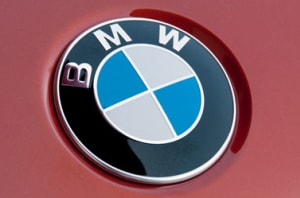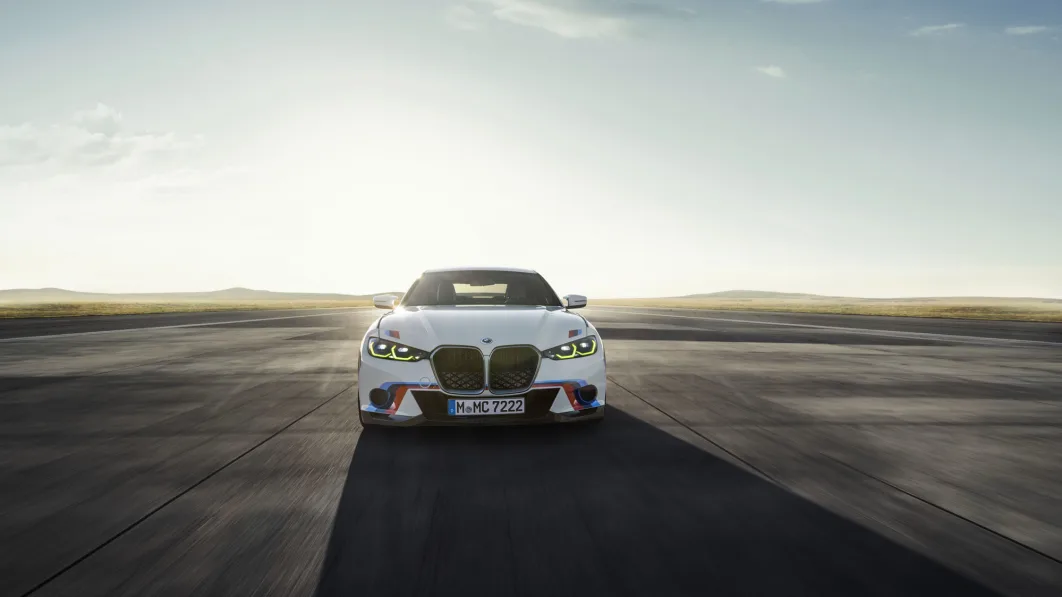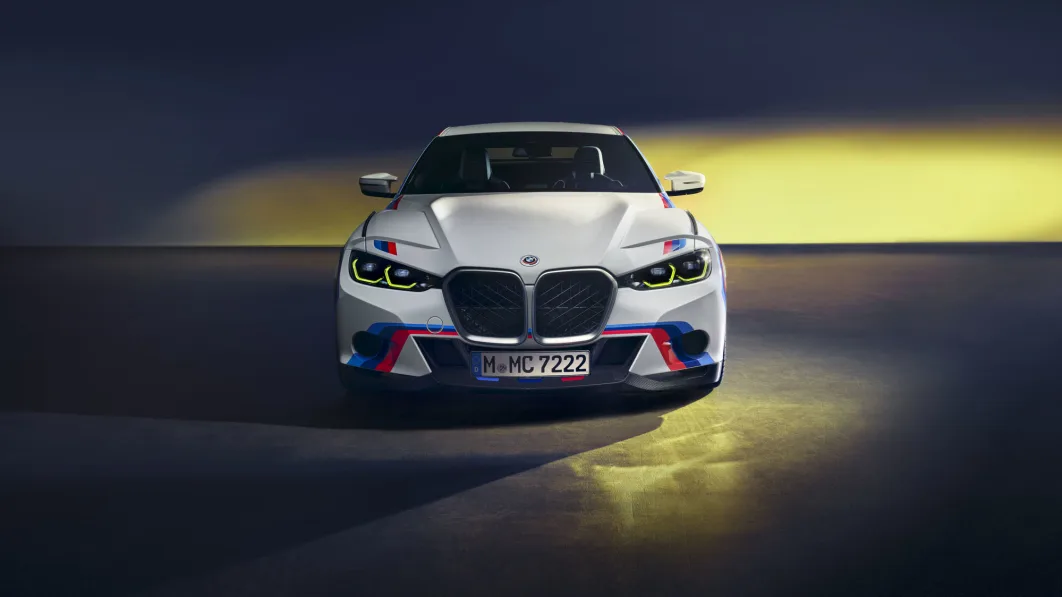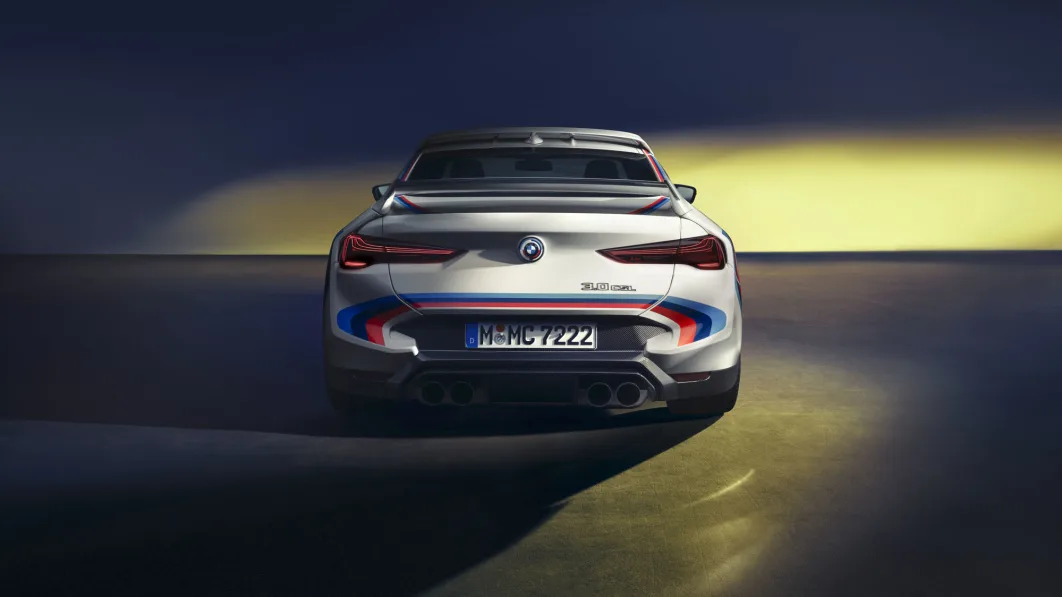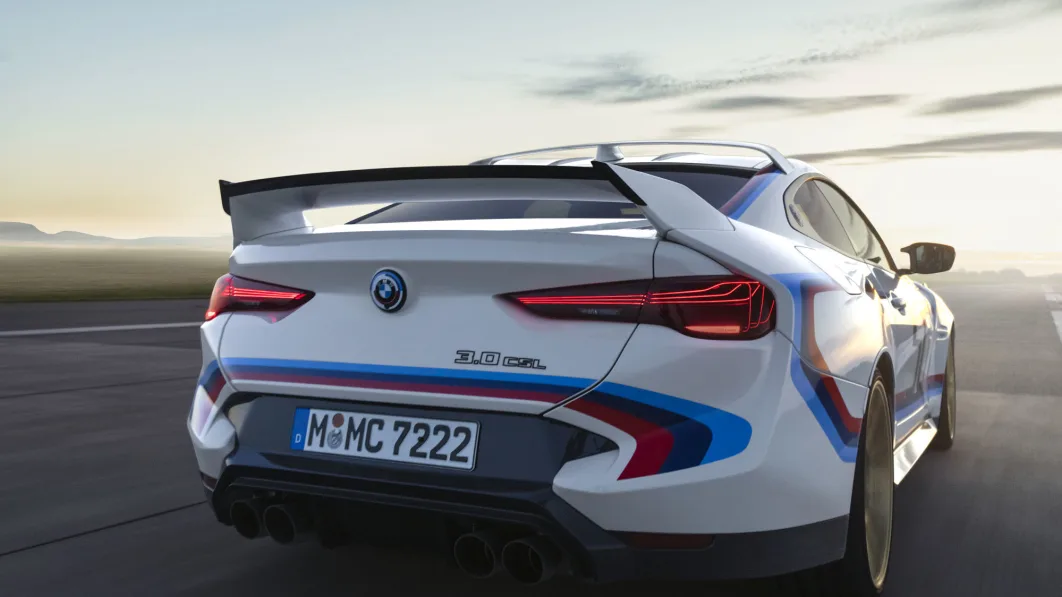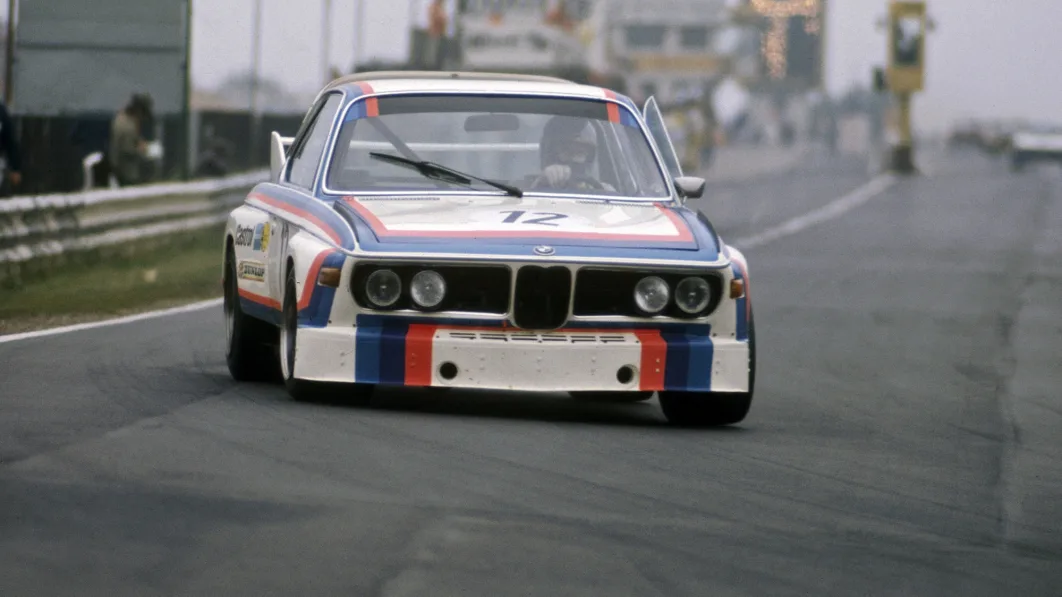BMW is giving enthusiasts something to be very thankful for this Thanksgiving. The company's M division unveiled a heritage-inspired limited-edition model called 3.0 CSL that was designed as a tribute to the original 3.0 CSL, one of BMW's most emblematic models.
Introduced in early 1972 to homologate the E9 in the European Touring Car Championship, the CSL designation stood for "coupé sport leichtbau," which means "coupe sport lightweight" in German. Fast-forward 50 years, and the born-again CSL stays true to tradition: It's a coupe, it's certainly sporty, and we're promised it's light thanks to the widespread use of carbon fiber. BMW M stresses that it developed the 3.0 CSL in-house on its own, this is not merely an M4 with a body kit, and it ensured the coupe is street-legal in European markets.
Visually, the 3.0 CSL looks more like BMW's modern-day coupes than like its predecessor; this isn't a full-on retro-styled car with round headlights. However, there are a handful of clear visual links between the two CSLs including flared fenders and quarter panels, a roof-mounted spoiler made with fiberglass-reinforced plastic, and a rear wing shaped like the unit fitted to the original car. As a side note, the 1972 3.0 CSL's wing earned it the nickname "Batmobile" and wasn't approved for road use (spoilers were a novelty at the time) so BMW couldn't deliver the car with it. Instead, the company placed the spoiler in the trunk and asked owners to get it installed on their own.
Back to the present: Most of the 3.0 CSL's body panels (including the roof panel, trunk lid, and sills) are made with carbon fiber, and the coupe rides on specific 20-inch front and 21-inch rear center-locking wheels wrapped by tires that Michelin developed specifically for it. The blue, red, and Alpine White livery is a throwback to the 1970s, and it doesn't sound like BMW will make other color combinations available.
The cabin looks familiar if you've spent time in BMW's recent models, but there are some cool features scattered throughout. One is the shift knob, which is finished in white and engraved with the shift pattern as well as the number 50. Carbon fiber trim reminds the driver and one passenger of the car's lightweight construction. We say "one passenger" because there are no rear seats. Instead, the space behind the M carbon bucket front seats is reserved for a storage compartment designed for racing helmets. And while BMW took out a great deal of the sound-deadening material to save weight, the 3.0 CSL offers features like air conditioning and a touchscreen-based infotainment system.
Power for the 3.0 CSL comes from a 3.0-liter straight-six built with a forged lightweight crankshaft and competition-derived cooling and oil supply systems. The twin-turbocharged engine is related to the unit found in the current-generation M3 and M4, but it's tuned to develop 560 horsepower and 404 pound-feet of torque; BMW proudly notes this is the most powerful straight-six it has ever put in a street-legal car. The engine spins the rear wheels via a six-speed manual transmission, and you're out of luck if you want all-wheel drive, an automatic, or both.
For context, the original 3.0 CSL (shown above) used a naturally-aspirated, 3.2-liter straight-six rated at 206 horsepower and celebrated as BMW M's most powerful six-cylinder to date. That was a lot of power in that era; a base 2002 shipped with a 100-horsepower engine.
BMW hasn't released performance numbers, but the 3.0 CSL should be as quick as it sounds. It should also offer the handling fans expect from an M-branded coupe thanks in part to an Adaptive M suspension system and an electromechanical steering system with a variable ratio. The standard carbon-ceramic braking system includes six-piston front calipers and rotors bigger than the original 3.0 CSL's wheels.
Production of the 3.0 CSL is limited to 50 units, a number chosen because BMW M turned 50 in 2022, and a company spokesperson told Autoblog that every build slot has already been allocated. There's a catch: none will be officially sold in the United States. Each example will be identified by its serial number engraved into a piece of carbon fiber trim on the passenger's side of the dashboard and should take about three months to build; many of the carbon fiber parts scattered across the cabin are notably hand-made.
Haven't we been here before?
BMW has used the CSL nameplate several times in the past five decades, but never on a car with a heritage-inspired design; at least not one bound for production. It experimented with the idea of a modern-day 3.0 CSL in 2015 when it introduced a pair of concepts named 3.0 CSL Hommage and 3.0 CSL Hommage R, respectively. Both were arguably closer to the original car in terms of design than the 2022 model.
BMW Information
